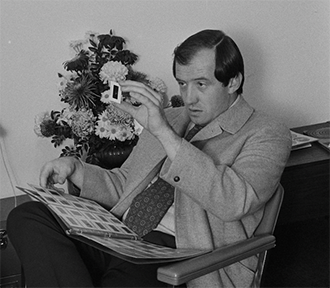The Invisible Dragon: Essays on Beauty and Other Matters
By Dave Hickey
Art Issues Press, 160 pages, $27.95
In 1993, the late art critic Dave Hickey published The Invisible Dragon, a collection of four essays that reasserted the centrality of beauty as a category for appreciating and thinking about art. Those unfamiliar with the contemporary art world might be surprised that it was controversial for an art critic to defend beauty, but it was. That’s because by the early 1990s, under the influence of academic critical theory, beauty had come to be regarded with suspicion as a sinister construct that reflected the prejudices of white males. Beauty was no longer to be appreciated—it was to be deconstructed for its role in perpetuating systems of oppression.
Hickey took aim at the emergent institutional framing of art around social justice and identity politics—an ethos on full display, for instance, in the Whitney Biennial of the same year Hickey’s book was published, which was described by The New York Times as a “biennial with a social conscience.” Today’s art world is even more consumed by the same ideological preoccupations that began to take precedence in the early ’90s. Hence why this is an opportune moment for Art Issues Press’s release of a new, expanded edition of The Invisible Dragon, which brings Hickey’s classic text back into print along with several previously unpublished essays.
“Any theory of art that doesn’t ground itself in beauty is ‘doomed to inconsequence.’”
Beauty, for Hickey, is what “causes visual pleasure in the beholder,” and thus the primary reason for engaging with art in the first place. Thus, any theory of art that doesn’t ground itself in beauty is “doomed to inconsequence.” Hickey believed beauty was eternal, but he was no staid traditionalist. On the contrary, his lust for beauty compelled him toward art both high and low, seldom prioritizing one over the other. In the 1970s, he worked mainly as a critic of country music and coined the term “outlaw country” for the now well-known subgenre. His admiring profile of Dolly Parton serves as the first chapter of the new edition of Invisible Dragon. Art institutions, Hickey believed, operate by the logic of Foucault’s panopticon: They disable our spontaneous engagement with art and engineer our reactions to it by telling us what we are looking at and what meaning we should extrapolate from it. This is far more damaging, as he saw it, than the oft-lamented effects of the art market, which was relatively uncaring about meaning and could leave art free to be perceived. Institutions, by contrast, distrust appearances because they inherently threaten the possibility of apprehending art without their guidance. “We are such obedient children of the panopticon,” Hickey writes, “that we have transformed the complex choice between the king’s savage justice and Bentham’s bureaucratic discipline into a progressive utopian option: ‘the corrupt old market’ vs. the ‘brave new institution.’”
